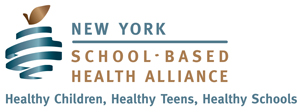School-Based Health Centers (SBHCs) are uniquely able to address the growing health needs of children across the county. SBHCs have been show to significantly impact the needs of children living in the New York’s neighborhoods with the largest health disparities. Through their accessible model, SBHCs are able to address larger proportions of uninsured children and families, greater barriers to accessing preventive health care, higher rates of emergency room visits, obesity, asthma, and exposure to violence and trauma. Below are a few of the many benefits that SBHCs have been proven to have on child and young adult health and education.
Why School-Based Health Centers?
SBHCs provide an optimal setting to foster learning readiness and academic achievement while giving children the resources they need to improve their health.
Poor academic outcomes and high dropout rates are major concerns of educators, policy makers, and parents alike – and poor health severely limits a child’s motivation and ability to learn. Recent research confirms that health disparities affect educational achievement.1 Improving students’ health is integral to education reform.
Click Here to Download the School-Based Health Centers and Academic Success PDF
The Facts:
- High school SBHC users in one 2000 study had a 50% decrease in absenteeism and 25% decrease in tardiness two months after receiving school-based mental health and counseling.2
- A study of SBHC users in Seattle found that those who use the clinic for medical purposes had a significant increase in attendance over nonusers.3
- A 2007 study found that SBHC users for mental health purposes increased their Grade Point Averages over time compared to nonusers.3
- African-American male SBHC users were three times more likely to stay in school than their peers who did not use the SBHC.4
- Students, teachers, and parents who have a SBHC rated academic expectations, school engagement, and safety and respect significantly higher than in schools without a SBHC.5
- SBHCs in The Bronx, NY reduced hospitalization and increased school attendance among school children with asthma.6
- A quasi-experimental study in New York observed that students not enrolled in a SBHC lost three times as much seat time as students enrolled in a SBHC.7
Why School-Based Health Centers?
Research and evaluations have demonstrated that school-based health centers represent cost-effective investments of public resources including fewer hospitalizations of children who regularly use their SBHCs and reduced Medicaid costs.
Click Here to Download the Cost-Savings of School-Based Health Centers PDF
The Facts:
- A study by Johns Hopkins University found that school-based health centers reduced inappropriate emergency room use, increased use of primary care, and resulted in fewer hospitalizations among regular users.1
- A study of Medicaid-enrolled children served by a SBHC in Atlanta, Georgia found significantly lower inpatient, nonemergency department transportation, drug, and emergency department Medicaid expenses as compared to children without a SBHC. In 1996 the total yearly expense per individual for the SBHC was $898.98, as compared to $2360.46 for individuals without a SBHC.2
- The number of hospitalizations and emergency department visits decreased for children with SBHCs in Cincinnati schools (2.4-fold and 33.5% respectively) – with an estimated savings of nearly $1,000 per child.3
- Students in New York City schools with SBHCs were less likely to have been hospitalized for asthma at least once in the past year (10.5%) compared to those in schools without SBHCs (17.1%).4
- In South Carolina, prevention-oriented health care provided in a SBHCdecreased emergency department visit rates by 41% to 57% — 18% greater than the decrease in students who did not use the SBHC.5
- Adolescents with access to SBHCs in Denver had 38% – 55% fewer after-hours care (emergent or urgent) visits than those without school-based health center access.6
- Students in Ohio who used an SBHC reported more positive self-perceptions of their health, which correlated with lower Medicaid costs. SBHC patients cost Medicaid an average of $30.40 less than comparable, non-SBHC patients.7
- A study that explored the cost-benefit of a nationwide SBHC program to manage childhood asthma estimated total savings for opportunity costs of work loss and premature death at $23.13 billion.8
Why School-Based Health Centers?
School-based health centers (SBHCs) are the ideal location for primary care and mental health staff to collaboratively address students’ physical and mental health needs – leading to greater success in school and in life.
Click Here to Download the School-Based Health Centers: On the Front Line for Mental Health PDF
The Facts:
- Seventy-five percent of SBHCs have a mental health provider.1
- In studies of SBHC service utilization, mental health counseling is repeatedly identified as the leading reason for visits by students.2
- One 1998 study found that adolescents who had access to SBHCs were ten times more likely to make a mental health or substance abuse visit than those without access to an SBHC.3
- In one study, inner-city students were 21 times more likely to make mental-health related visits to SBHCs than to community health centers.4
- A national survey of SBHCs found the following mental health and counseling services are provided at SBHCs where mental health professionals are included as center staff: crisis intervention, mental health assessment, grief and loss therapy, substance use therapy, mediation, and others.1
- School-based health centers offer high quality mental health care by using an integrated strategy for addressing health and mental health issues. Several studies have shown that the barriers experienced in traditional mental health settings 2– stigma, non-compliance, inadequate access – are overcome in school-based settings.5
- One study found that students served by SBHCs had fewer discipline problems, course failures, and school absences.6
For more detailed information on our sources or to read up on other scientific publications related to School-Based Health Centers, check out our Publications and Learnings section.
